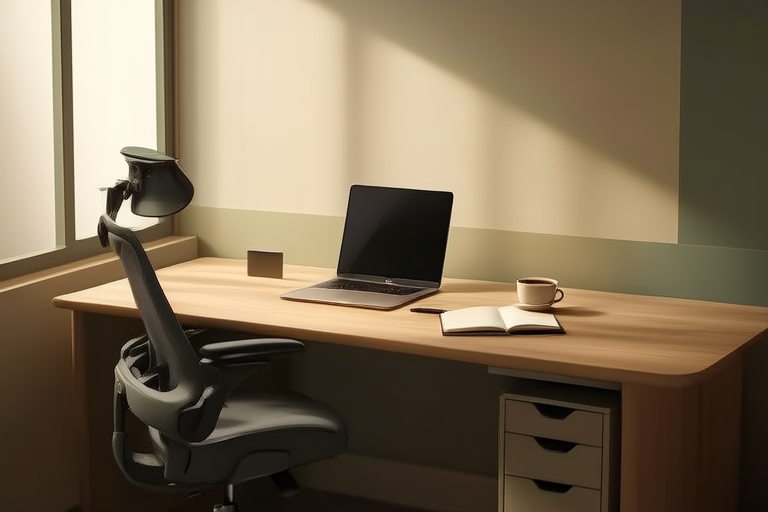How to Create an Efficient Workspace: A Step-by-Step Guide
Introduction
Creating an efficient workspace is crucial for productivity, creativity, and overall well-being. Whether you’re working from home or in a shared office, the environment around you can significantly impact your focus, energy levels, and efficiency. In this guide, we will walk you through the essential steps to design a workspace that enhances your performance and reduces stress. From ergonomic considerations to decluttering tips, we’ll cover everything you need to know to create an optimal work environment.
Understanding Ergonomics
The Importance of Ergonomic Design
Ergonomics plays a pivotal role in creating an efficient workspace. An ergonomically designed setup ensures that your body is comfortable and supported while you work, reducing the risk of strain and injury. Key components include proper chair height, desk height, monitor placement, and keyboard and mouse positioning. By optimizing these elements, you can maintain good posture and prevent discomfort throughout your workday.
Tips for Ergonomic Setup
- Chair Height: Ensure your feet are flat on the floor, with your knees at a 90-degree angle. Adjust the seat height accordingly.
- Desk Height: Your elbows should be at a 90-degree angle when typing, and your wrists should be straight. Consider using a standing desk if you prefer alternating between sitting and standing.
- Monitor Placement: Position your monitor directly in front of you, about an arm’s length away, with the top of the screen at eye level. This helps reduce neck strain.
- Keyboard and Mouse: Place your keyboard and mouse close to you so your arms are relaxed and your wrists are straight. Use a keyboard tray if necessary to achieve the correct height.
Organizing Your Space
Decluttering Basics
A cluttered workspace can lead to mental clutter, making it harder to concentrate and find what you need. Start by assessing your current setup and identifying items that don’t serve a purpose. Remove unnecessary objects, such as old papers, unused gadgets, and personal items that aren’t essential for work. Regularly reassess your space to ensure it remains tidy.
Storage Solutions
- Drawer Dividers: Use drawer dividers to keep small items like pens, clips, and paperclips organized.
- File Cabinets: Invest in a filing cabinet to store important documents and files. Label each section clearly for easy access.
- Shelving Units: Use shelves to display books, binders, and other frequently used materials. Keep only what you need within reach.
- Baskets and Bins: Utilize baskets and bins for loose items like notepads, sticky notes, and office supplies.
Enhancing Productivity with Technology
Essential Tools for a Modern Workspace
In today’s digital age, technology plays a vital role in enhancing productivity. Here are some must-have tools for any efficient workspace:
- High-Quality Monitor: A large, high-resolution monitor can improve visibility and reduce eye strain. Consider dual monitors for multitasking.
- Noise-Cancelling Headphones: If you work in a noisy environment, noise-cancelling headphones can help you focus better.
- Smart Lighting: Adjustable lighting can enhance your mood and energy levels. Consider smart bulbs that allow you to change the color temperature throughout the day.
- Wire Management Solutions: Keep cables and wires organized with cable management boxes or clips to avoid clutter and tripping hazards.
Maximizing Tech Integration
To truly maximize the benefits of technology, integrate it seamlessly into your workflow. Set up shortcuts, automate repetitive tasks, and use productivity apps to streamline your processes. For example, use project management software like Trello or Asana to keep track of deadlines and assignments. Automate routine tasks like email sorting or file organization with tools like Zapier.
Personalizing Your Space
Creating a Comfortable Environment
Personalizing your workspace can boost your morale and make it more enjoyable to spend time there. Incorporate elements that make you feel at ease, such as:
- Plants: Adding plants can improve air quality and create a calming atmosphere.
- Artwork: Display artwork or photos that inspire you and bring joy.
- Soft Lighting: Soft, ambient lighting can create a warm and inviting environment.
- Comfortable Seating: Choose a chair that provides both support and comfort. Consider adding a footrest or lumbar cushion if needed.
Maintaining Balance
While personalizing your space is important, it’s equally crucial to maintain balance. Avoid over-decorating, which can lead to distractions. Keep personal items minimal and focused on functionality and aesthetics that promote focus and relaxation.
Conclusion
Creating an efficient workspace involves careful planning and attention to detail. By focusing on ergonomics, organization, technology integration, and personalization, you can design a space that supports your productivity and well-being. Remember to regularly reassess and adjust your setup as your needs evolve.
Action Steps
- Start by evaluating your current workspace and identifying areas for improvement.
- Gradually implement ergonomic adjustments, declutter, and organize your space.
- Invest in technology that enhances your workflow.
- Personalize your space to create a comfortable and inspiring environment.
By following these steps, you’ll be well on your way to creating a workspace that not only boosts your productivity but also enhances your overall quality of life.
